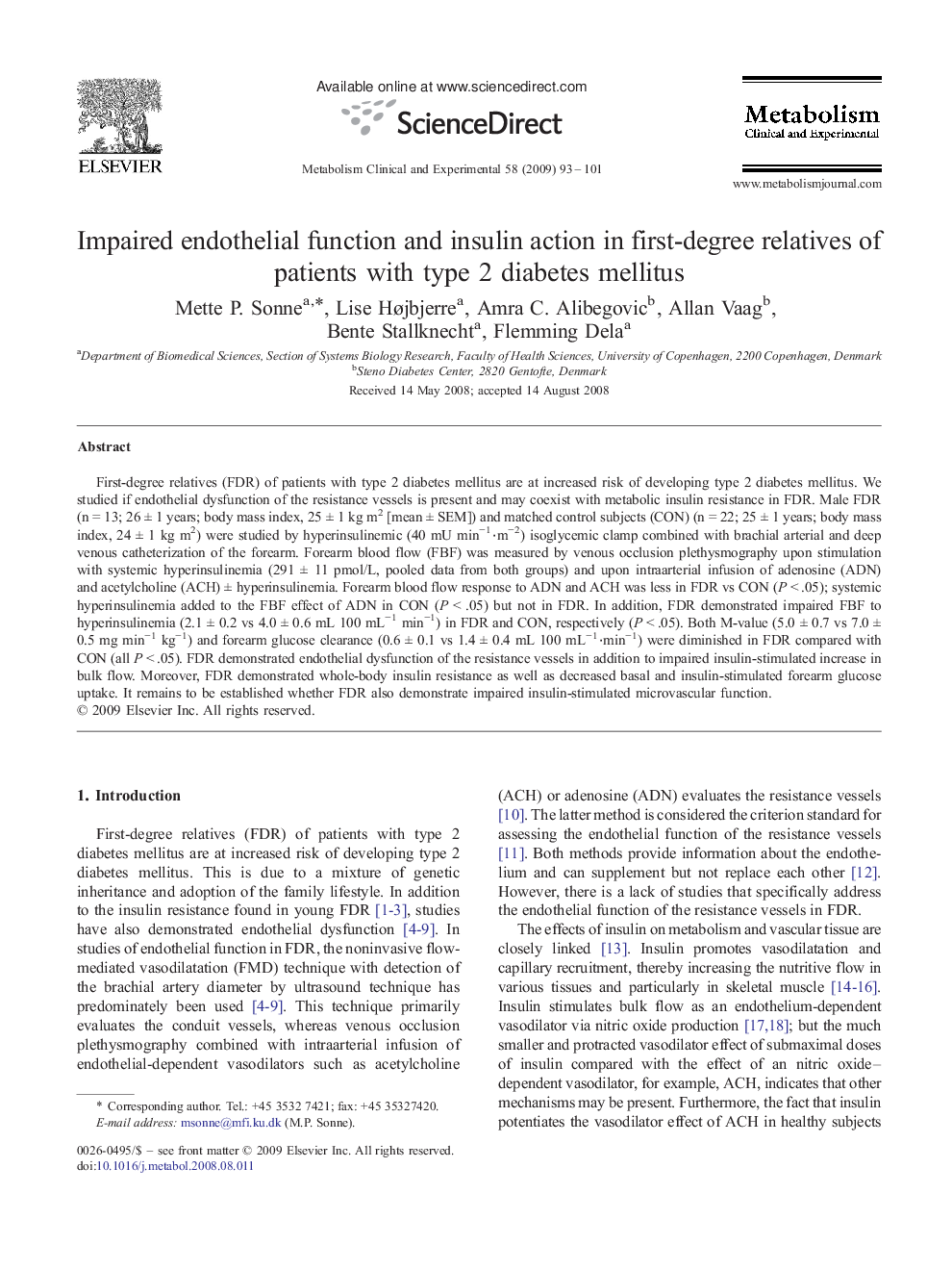| کد مقاله | کد نشریه | سال انتشار | مقاله انگلیسی | نسخه تمام متن |
|---|---|---|---|---|
| 2806162 | 1157103 | 2009 | 9 صفحه PDF | دانلود رایگان |

First-degree relatives (FDR) of patients with type 2 diabetes mellitus are at increased risk of developing type 2 diabetes mellitus. We studied if endothelial dysfunction of the resistance vessels is present and may coexist with metabolic insulin resistance in FDR. Male FDR (n = 13; 26 ± 1 years; body mass index, 25 ± 1 kg m2 [mean ± SEM]) and matched control subjects (CON) (n = 22; 25 ± 1 years; body mass index, 24 ± 1 kg m2) were studied by hyperinsulinemic (40 mU min−1⋅m−2) isoglycemic clamp combined with brachial arterial and deep venous catheterization of the forearm. Forearm blood flow (FBF) was measured by venous occlusion plethysmography upon stimulation with systemic hyperinsulinemia (291 ± 11 pmol/L, pooled data from both groups) and upon intraarterial infusion of adenosine (ADN) and acetylcholine (ACH) ± hyperinsulinemia. Forearm blood flow response to ADN and ACH was less in FDR vs CON (P < .05); systemic hyperinsulinemia added to the FBF effect of ADN in CON (P < .05) but not in FDR. In addition, FDR demonstrated impaired FBF to hyperinsulinemia (2.1 ± 0.2 vs 4.0 ± 0.6 mL 100 mL−1 min−1) in FDR and CON, respectively (P < .05). Both M-value (5.0 ± 0.7 vs 7.0 ± 0.5 mg min−1 kg−1) and forearm glucose clearance (0.6 ± 0.1 vs 1.4 ± 0.4 mL 100 mL−1⋅min−1) were diminished in FDR compared with CON (all P < .05). FDR demonstrated endothelial dysfunction of the resistance vessels in addition to impaired insulin-stimulated increase in bulk flow. Moreover, FDR demonstrated whole-body insulin resistance as well as decreased basal and insulin-stimulated forearm glucose uptake. It remains to be established whether FDR also demonstrate impaired insulin-stimulated microvascular function.
Journal: Metabolism - Volume 58, Issue 1, January 2009, Pages 93–101